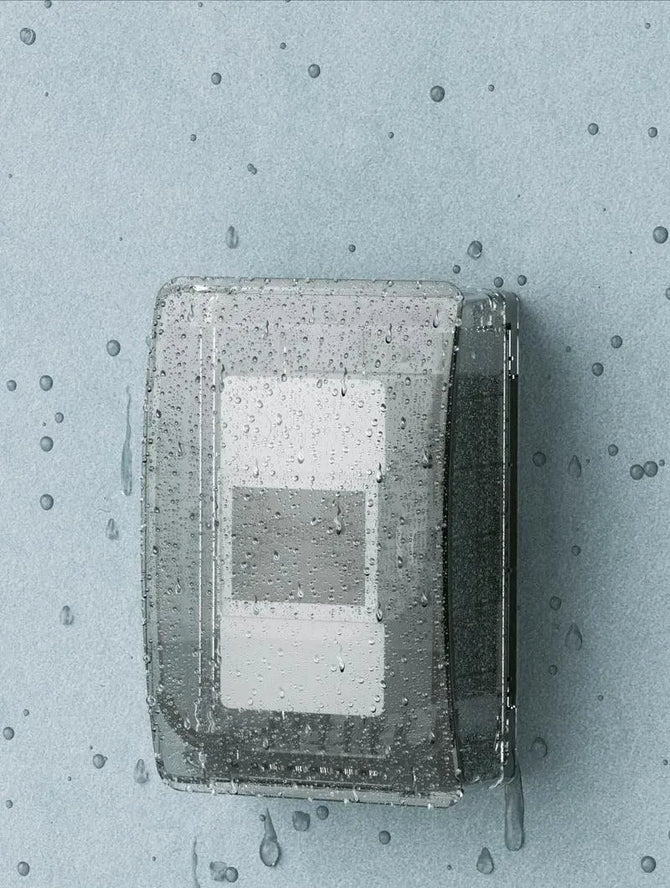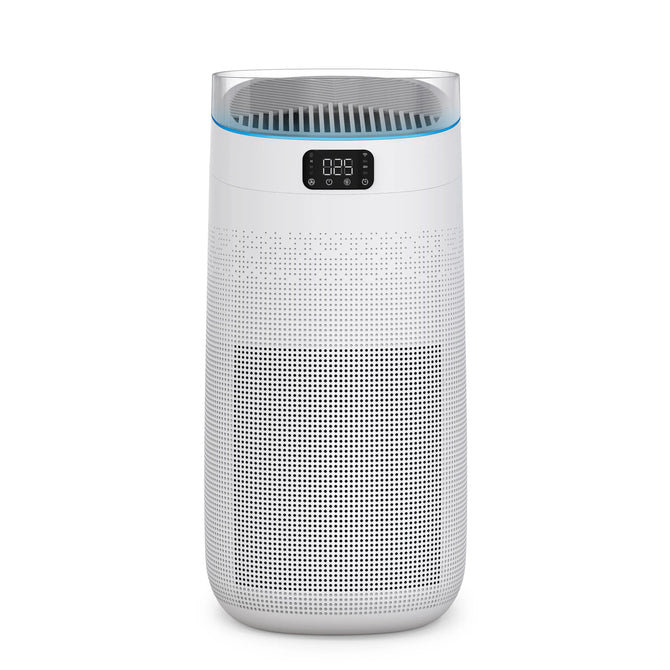Since the release of the SwitchBot Hub 2, the integration of our hub with a temperature and humidity meter built inside has received positive reviews from many users around the world. However, the design of placing the temperature and humidity sensor on the data cable has raised questions from quite a few, with many people asking:
Why put the temperature and humidity sensor on the data cable?
Well, we’ll tell you why, right here, right now. Check out our blog below to find out what made us do something we’ve never done before.

It's gettin' hot in here...
So why did we decide to do this? Let’s take a look at the temperature of our product surface using an infrared thermal imaging camera when our smart home hub is in an environment that we’d consider to be more on the regular side. With a room temperature of 25 degrees Celsius, we can clearly see that the center of our hub’s temperature is actually quite high, meaning that the overall temperature of the product is also slightly higher than its surrounding environment conditions. I know, I l know, why? Hear me out, I’ll explain.
When we play games or open multiple web pages on a computer, if the processing chip inside is being used a lot, it generallt tends to emit a lot of heat. Your computer may be able to reduce the heat through water cooling or air cooling, but even if it is reduced, your computer is still generating heat. Similarly, our smart home hub’s Wi-Fi chip consumes more power and generates more heat when frequently connected to the internet. This sometimes leads to the internal temperature of your device being higher than actual room temperature. Therefore, if your temperature and humidity sensor is installed inside your device, it may sense heat generated by the Wi-Fi chip inside too.

We tried a lot...
So how can we solve inaccurate temperature and humidity sensing due to heat generated by the Wi-Fi chip? Our first thought was to move the temperature and humidity sensor to the periphery of the product. Since the center of the product generates the most heat, wouldn’t it be a good idea to move the temperature and humidity sensor to the outside of the device itself? Well, nope, that failed miserably because we found that even if a sensor is placed around the product, the temperature is still slightly higher than the surrounding environment.
After that, we tried a different way… physical cooling. As expected, the first thing we thought of when trying to use this method would be to copy what you might find on a traditional desktop computer, using a fan to actively eliminate heat generated by the Wi-Fi chip. However, it is not realistic to install a fan or water cooling device inside because SwitchBot Hub 2 was made to be compact.
Since it is not possible to actively cool the device from the outside, can we start with the software?
The third way is by using algorithms, trying to figure out how much temperature the Wi-Fi chip actually generates and use an algorithm to balance it out. This method is a feasible solution and also makes the product look more integrated. However, this algorithm may not be accurate (sorry dev team!), and external factors are also variables, not to mention that the temperature and humidity calculated by the algorithm are not actually sensed.
What is the purpose of using a temperature and humidity sensor? It’s for accuracy, right? For children, the elderly, or even ourselves, everyone’s perceived temperature is different. After all, only more accurate environmental sensing can bring better home appliance control and environmental regulation.

So... We stuck it on the cable!
We wanted to achieve the most realistic way to monitor temperature and humidity, so we decided to place our sensor in a position that is not affected by the Wi-Fi chip and can sense the temperature and humidity of the environment based. So we tried something bold. Creatively integrating the temperature and humidity sensor into the data cable, while increasing air holes and enhancing air flow. With the help of a highly precise Swiss chip, we can better perceive the temperature and humidity of the environment around us and completely eliminate the impact the Wi-Fi chip has on our sensor with heat generation. We felt this solution was the best choice.
This structural innovation has also brought us to come to think of the future. Could we make carbon data lines? A built-in human body sensor data line? (hmmm, maybe not just yet LOL) Even if you guys have your own ideas, we’d love to know them too! Maybe in the future, there will be a universal data line that can be selected according to your needs.
We have always insisted on promoting product research and development based on the real needs of users. The reason why we want to add sensors to SwitchBot Hub 2 is to let everyone know about just exactly what’s going on in your indoor environment at home. And to help your children, parents, and pets enjoy a more comfortable home environment. However, all of this is based on answering one question:
Is the temperature really what it being told to me at this moment in time?
And with SwitchBot Hub 2, the answer is simple. Yes.






































